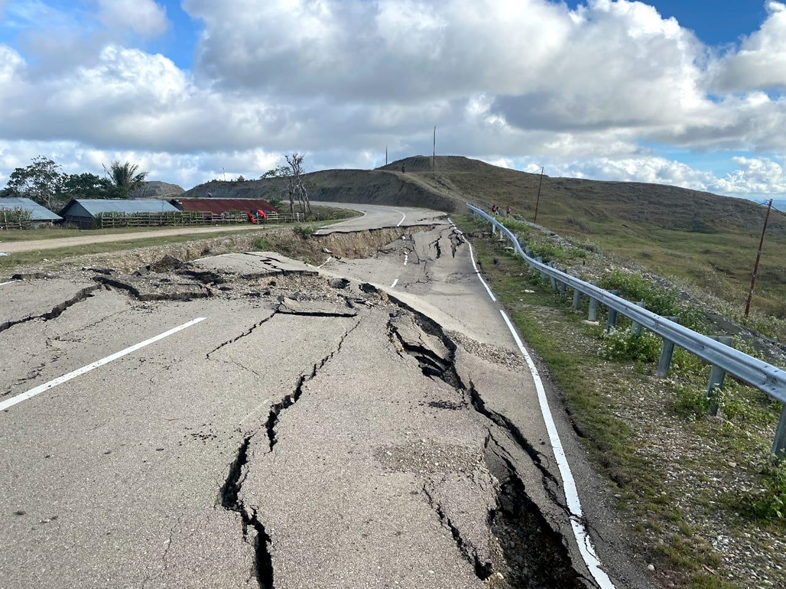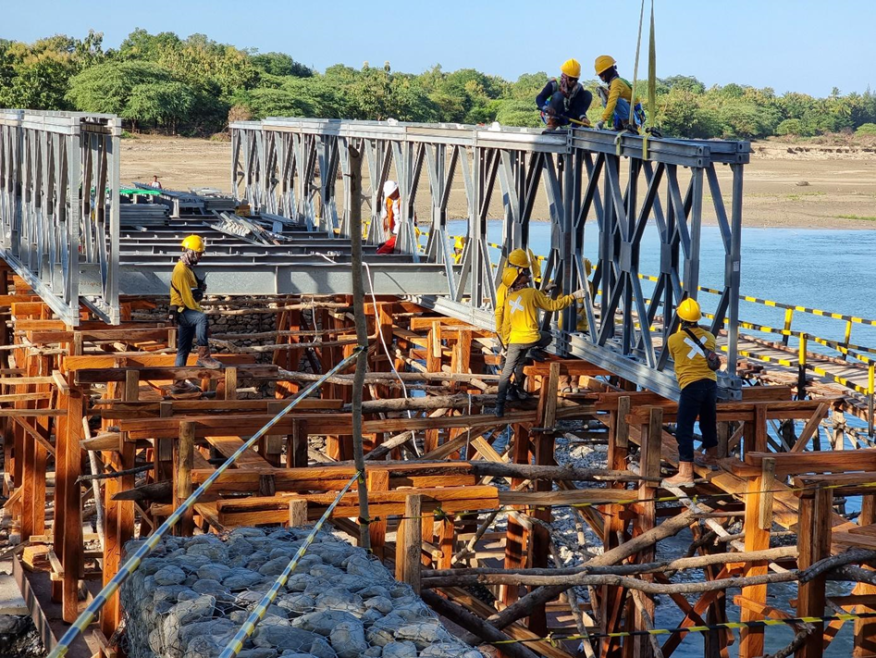
Disaster Management Manual
A manual for practitioners and decision makers!

Disaster Management Manual
A manual for practitioners and decision makers!
Recovery measures, both short term and long term, aim to return vital life support systems to a minimum operating standard. The recovery phase in disaster management consists of two activities, namely rehabilitation and reconstruction. Rehabilitation is the repair and restoration of road and bridge infrastructure at an adequate level in post-disaster areas. Reconstruction is an act of physical condition recovery through the permanent rebuilding of road and road infrastructure so it can return to its original condition or even better than before the disaster. Figure 5.1-1 is an example of damage caused by a tropical cyclone in Kupang, East Nusa Tenggara, Indonesia.

The Post-Disaster Needs Assessment (PDNA) is a series of activities to aid with impact and needs assessments, which form the basis of an action plan for rehabilitation and reconstruction. Estimated needs is a calculation of the costs required to carry out rehabilitation and reconstruction activities. The PDNA is important because it serves as a record of the damage caused by the disaster, provides estimated losses for use in the calculation process for rehabilitation and reconstruction, and descriptions or evidence of the benefits that will be obtained from mitigation activities. The PDNA is an essential part of the process. The steps and objectives consist of 1 :
This stage has the objective of guiding the authorities to take PDNA activation steps and guide the authorities to compile a frame of reference for PDNA activation. This stage has an output PDNA activation decision and PDNA Terms of Reference.
The purpose is to guide the authorities to set up a PDNA work team and guide the work team to prepare PDNA methods and tools. This stage has an output. The PDNA work team and the appropriate PDNA methods and tools with field conditions.
The purpose is to guide the PDNA work team to implement collection of data on the effects of and impacts on post-disaster needs. The output from this stage is the availability of field data.
The purpose is to guide PDNA work team to conduct assessments of disaster effects, disaster impact assessments, and needs assessments for post-disaster recovery. The output at this stage is the result of the impact assessment – impacts and post-disaster needs.
The purpose is to guide PDNA work team to compile a PDNA report. The output is PDNA periodic reports.
Furthermore, road transport management is needed to accommodate updated post-disaster data and prediction of funds. Implementation of safe evacuation routes needs to identify locations that are not susceptible to disasters; for example, the route must consider the contour/elevation (to anticipate tsunami or tidal flood), far from the slope (to anticipate earthquake or landslide or Nalodo), and must be supported by an advanced road and bridge technology to achieve 2 :
The example of semi-permanent bridge in East Nusa Tenggara, Indonesia, can be seen in Figure 5.1-2.
